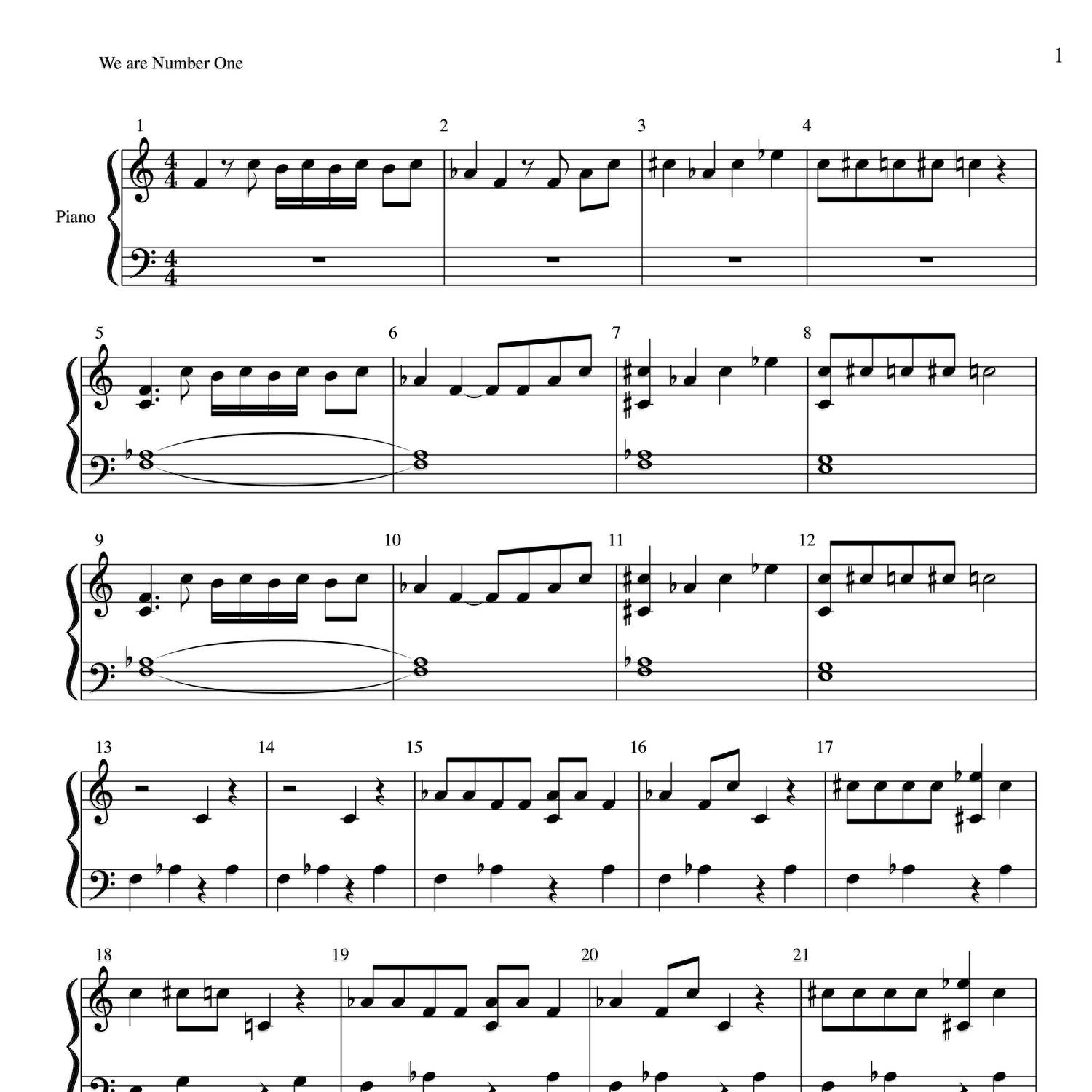

#We are number one but with all note c code#
Now that you've seen the different numeric types, write code that calculates the area of a circle whose radius is 2.50 centimeters. Notice that the math using the decimal type has more digits to the right of the decimal point. The letter M was chosen as the most visually distinct letter between the double and decimal keywords. Otherwise, the compiler assumes the double type. The M suffix on the numbers is how you indicate that a constant should use the decimal type. You can see the greater precision with the decimal type by trying the following code: double a = 1.0 Notice that the range is smaller than the double type.

Add this code to see those limits: int max = int.MaxValue Ĭonsole.WriteLine($"The range of integers is ") The C# integer type differs from mathematical integers in one other way: the int type has minimum and maximum limits. Try the following code after the method call to OrderPrecedence(): int a = 7 You can get the remainder by using the modulo operator, the % character. That last sample showed you that integer division truncates the result.

Your code should look something like this: // WorkWithIntegers() Type dotnet run again to see the results.īefore moving on, let's take all the code you've written in this section and put it in a new method. If you haven't seen this behavior, try the following code: int e = 7 Integer division always produces an integer result, even when you'd expect the result to include a decimal or fractional portion. You may have noticed an interesting behavior for integers. Add the following lines and run again: d = (a + b) * c Įxplore more by combining many different operations. You can force a different order of operation by adding parentheses around the operation or operations you want performed first. The output demonstrates that the multiplication is performed before the addition. Explore that by adding the following code after the call to WorkWithIntegers(), and executing dotnet run: int a = 5 Multiplication and division take precedence over addition and subtraction. The C# language defines the precedence of different mathematics operations with rules consistent with the rules you learned in mathematics. Because WorkWithIntegers() is a method, you need to only comment out one line. The compiler doesn't generate any executable code from comments. Comments are any text you want to keep in your source code but not execute as code. It will make the output less cluttered as you work in this section: //WorkWithIntegers() Explore order of operationsĬomment out the call to WorkingWithIntegers(). The following code declares the method and defines it. The line WorkWithIntegers() invokes the method. When you finish, your code should look like this: WorkWithIntegers() Organizing your code into methods makes it easier to start working with a new example. You call a method by writing the method's name followed by ().
#We are number one but with all note c series#
A method is a series of statements grouped together and given a name. Before you start the next section, let's move the current code into a separate method. That exercise will help you learn the structure of C# code. When the output contains error messages, look closely at the example code and the code in your window to see what to fix. The compiler will find those errors and report them to you. Mixing variables and constant numbers is allowed.Īs you explore C# (or any programming language), you'll make mistakes when you write code. You can also experiment by writing multiple mathematics operations in the same line, if you'd like. Add these lines after the line that writes the value of c: // subtraction Start by exploring those different operations. Other common mathematical operations for integers include: The int type represents an integer, a zero, positive, or negative whole number. You've seen one of the fundamental math operations with integers. Run this code by typing dotnet run in your command window. Open Program.cs in your favorite editor, and replace the contents of the file with the following code: int a = 18 These implicit global using directives include the most common namespaces for the project type. NET 6 SDK also adds a set of implicit global using directives for projects that use the following SDKs: For more information see the article on New C# templates generate top level statements Your application may not match the code in this article, if you've already upgraded to the.


 0 kommentar(er)
0 kommentar(er)
